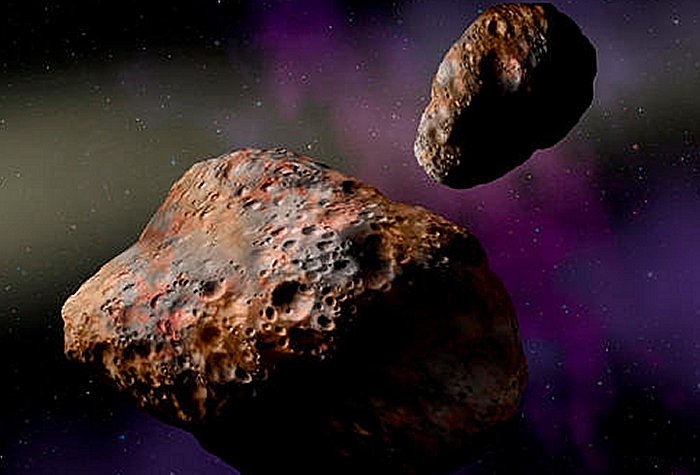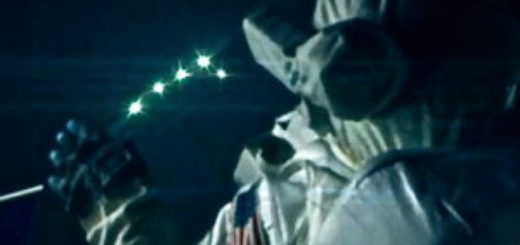Unusual Pair Of Trojan Asteroids -Patroclus and Menoetius – Studied
– An unusual pair of asteroids – Patroclus and Menoetius – has been studied by scientists at Southwest Research Institute.
They are around 70 miles wide and orbit around each other as they collectively circle the Sun. They are the only large binary known in the population of ancient bodies referred to as the Trojan asteroids.

SwRI scientist studied the binary asteroid Patroclus-Menoetius, shown in this artist’s conception, to determine that a shake-up of the giant planets likely happened early in the solar system’s history, within the first 100 million years.
SwRI scientist studied the binary asteroid Patroclus-Menoetius, shown in this artist’s conception, to determine that a shake-up of the giant planets likely happened early in the solar system’s history, within the first 100 million years. Credit: Image Courtesy of W.M. Keck Observatory/Lynette Cook
“The Trojans were likely captured during a dramatic period of dynamic instability when a skirmish between the solar system’s giant planets — Jupiter, Saturn, Uranus and Neptune — occurred,” SwRI Institute Scientist Dr. David Nesvorny said in a press release.
The two swarms of Trojans orbit at roughly the same distance from the Sun as Jupiter, one swarm orbiting ahead of, and the other trailing, the gas giant.
This shake-up pushed Uranus and Neptune outwards, where they encountered a large primordial population of small bodies thought to be the source of today’s Kuiper Belt objects, which orbit at the edge of the solar system.
“Many small bodies of this primordial Kuiper Belt were scattered inwards, and a few of those became trapped as Trojan asteroids.”
According to the study, the existence of these two asteroids, Patroclus-Menoetius indicates that the dynamic instability among the giant planets must have occurred within the first 100 million years of the solar system formation.
Recent models suggest that these types of binaries are leftovers of the very earliest times of our solar system, when pairs of small bodies could form directly from a collapsing cloud of “pebbles.”
“Observations of today’s Kuiper Belt show that binaries like these were quite common in ancient times,” said Dr. William Bottke, director of SwRI’s Space Studies Department, who coauthored the paper. “Only a few of them now exist within the orbit of Neptune. The question is how to interpret the survivors.”
The team created new models that show that the existence of the Patroclus-Menoetius binary strongly indicates an earlier instability.
This early dynamical instability model has important consequences for the terrestrial planets, particularly regarding the origin of large impact craters on the Moon, Mercury and Mars that formed approximately 4 billion years ago. The impactors that made these craters are less likely to have been flung in from the outer regions of the Solar System. This could imply they were made by small-body leftovers of the terrestrial planet formation process.
Much more will be learned about Patroclus-Menoetius binary when NASA’s Lucy mission, led by SwRI scientist and paper coauthor Dr. Hal Levison, surveys the pair in 2033.



 Creators of mankind
Creators of mankind Description of “Tall white aliens”
Description of “Tall white aliens” Where they came from?
Where they came from? About hostile civilizations
About hostile civilizations The war for the Earth
The war for the Earth “Tall white aliens” about eternal life
“Tall white aliens” about eternal life Video: “Nordic aliens”
Video: “Nordic aliens” Aliens
Aliens Alien encounters
Alien encounters The aliens base
The aliens base UFO
UFO Technology UFO
Technology UFO Underground civilization
Underground civilization Ancient alien artifacts
Ancient alien artifacts Military and UFO
Military and UFO Mysteries and hypotheses
Mysteries and hypotheses Scientific facts
Scientific facts


















